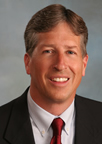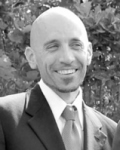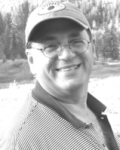From Alumni House to Alumni Center
Plans are under way for a revamped gathering place.
![12.06.27 UOFU ALUMNI - FRONT [LOWER]](https://dhyy726gu6a89.cloudfront.net/wp-content/uploads/2013/08/03051510/12.06.27-UOFU-ALUMNI-FRONT-LOWER.jpg)
This artist’s rendering shows the preliminary plan for the exterior of the new Alumni Center on the University of Utah campus. (Rendering by Bowen Studios)

The plan for the interior atrium of the new Alumni Center includes lots of windows and well lit, open space. (Rendering by Bowen Studios)
Under the leadership of Executive Director John Ashton BS’66 JD’69, the Alumni Association connects and engages 243,000 U alumni worldwide. From the Alumni House, the association:
- oversees 16 U.S. alumni chapters and three international clubs
- raises and awards more than $400,000 annually in student scholarships
- sponsors the Alumni Association, Beehive Honor Society, Emeritus Alumni, Student Alumni, and Young Alumni boards and assists with their activities
- recruits and trains more than 400 alumni legislative advocates
- produces and distributes 270,000 issues annually of Continuum magazine, as well as monthly Alumni Association e-newsletters and various email updates
- supports the Utah Food Bank in an annual food drive that this past year collected $108,000 and 320,000 pounds of food for needy Utahns
- sponsors The MUSS, the 6,000-member student athletics fan club, voted the loudest in the Pac-12
- provides career services to U alumni near and far

The University of Utah Alumni Association has outgrown its current Alumni House.
The building is also a meeting and gathering place. More than 500 alumni, campus, and community events were hosted at the Alumni House last year. These included retreats, conferences, campus orientations, awards ceremonies, service projects, birthday parties, wedding receptions, and retirement parties. The Alumni House has served the Alumni Association well, but its age is beginning to show. As the campus grows and expands, so must the building.
With a 36 percent increase in the student population since 1980, the U’s entry into the Pac-12, and the University’s growing national and international reputation, the Alumni House can no longer keep up with the internal and external demands. The much-loved gathering place must be improved.
Michele Mattsson HBA’85 JD’88, a member of the U Board of Trustees and a former Alumni Association Board president, along with current officers and board members, recognized the need to expand and upgrade the Alumni House. Floor plans and renderings were created to transform the 1980s-vintage building into a more spacious, contemporary Alumni Center.
The new center will include:
- a two-story atrium with natural light, sweeping views, and cozy meeting areas
- an elegant ballroom capable of seating more than 300 people
- a full-service, modern kitchen
- a variety of meeting rooms, including a formal boardroom
- a memorabilia gallery, class link wall, and donor tributes
- an array of upgrades to the building’s exterior, grounds, and technology
A project like this is no small feat. The Alumni Association has launched a capital campaign to raise the estimated $8 million it will take to transform the current building into an Alumni Center.
For more information, contact Jessica Peterson at the Alumni Association, (801) 581-3857, or go online to www.alumni.utah.edu/transformation.
Alumni Association Welcomes Board Members and Officers
The University of Utah Alumni Association this spring welcomed seven new members of its Board of Directors and four new presidents of the board’s affiliates.
The new board leaders and members were announced by Board President Keven M. Rowe BS’83 JD’86 and Vice President Heidi Makowski BS’83 at the association’s Annual Board Meeting on May 9, at the Alumni House.
Graham Anderson BA’09 is the new president of the Beehive Honor Society Board. He currently works as director of special projects for Crown Council, overseeing multiple partnerships for a network of dentists, and is a former member of the Alumni Association’s Student Alumni Board. Tim Conde BA’00 JD’04 will serve as president of the Young Alumni Board. He is a lawyer with Stoel Rives, specializing in commercial and employment litigation. Susan Anderson BS’61, who currently works in commercial real estate investing, is the new president of the Emeritus Alumni Board. And Danielle McConkie, a U senior majoring in political science, will lead the Student Alumni Board.
 Graham Anderson  Susan Anderson  Tim Conde  Danielle McConkie |
The seven new members of the Alumni Association’s Board of Directors are Luis Ayllon BME’02, Tom Dearden BFA’85, Rebecca Duberow BA’72, Scott Hagen BA’83 JD’86, Jennifer Kohler BA’92 JD’99, Shaun Nielson MBA’98, and Scott Verhaaren BA’90 MBA’91.
Ayllon works as a program leader for General Electric Healthcare, leading and managing hardware engineering teams. Dearden is chief executive officer of Datamark, a direct-marketing firm specializing in the education sector. Hagen is a lawyer with Ray Quinney & Nebeker, where he is the chair of the firm’s employment and labor section.
Duberow is an associate broker with The Group Real Estate in Salt Lake City. Kohler is senior counsel for the Utah Transit Authority. Nielson is senior vice president and office manager for the Wells Fargo Real Estate Banking Group in Salt Lake City. And Verhaaren is a senior partner with The Boyer Company, a real estate development firm.
 Luis Ayllon  Tom Dearden  Rebecca Duberow  Scott Hagen |
 Jennifer Kohler  Shaun Nielson  Scott Verhaaren |
U Alumni Gather in Germany for 2012 European Reunion
Story and photo by Cornelia Divricean

U alumni paddle rafts past the cliffs of the Danube Gorge during the 2012 European Alumni Reunion.
More than 60 University of Utah alumni from Austria, Belgium, France, Germany, Italy, the Netherlands, and Russia, as well as from Utah, Idaho, and Texas in the United States, gathered during a weekend in May for the 2012 University of Utah European Alumni Reunion in Regensburg, Germany.
Regensburg is a beautiful old city in Bavaria, about one hour north of Munich. Situated on the Danube River, Regensburg was once one of the most important cities in central Europe and recently became a UNESCO World Heritage Site. The guest speakers for the reunion were A. Lorris Betz, former senior vice president of health sciences and former interim president of the U; Barbara Snyder, the University’s vice president of student affairs; and Laura Snow BA’88, special assistant to the president and secretary to the University.
The reunion was organized by the Utah Europe Association, the U’s first international alumni group, with the help of Jörg Ehehalt, who was an exchange student at the University of Utah in 1996 to 1997. The European alumni have held a reunion every year since 1998.
This year, the reunion began on the evening of May 25 at the traditional Dult Festival, a smaller version of Oktoberfest that is held in the spring. After a day of sightseeing, the alumni gathered May 26 for the U official dinner at a restaurant on a Danube River island. The first European Alumni Award was presented to Alexandra Kaul BS’87 MBA’88, who is from Germany, for her contributions to the European Alumni Association.
The next day, alumni paddled rafts past the steep cliffs surrounding the Danube Gorge and then returned to the Dult Festival, where they enjoyed delicious Bavarian food, fresh beer, and great U friends, and talked about where they should meet in 2013.
—Cornelia Divricean BS’09 MS’12 is the U’s international alumni coordinator.



















 “With preterm birth, if we could even prolong a pregnancy by one or two weeks, we could make a very big impact on the number of babies that survive and make sure that those that survive are healthy,” says M. Sean Esplin, an associate professor of obstetrics and gynecology at the University of Utah and an obstetrician for Intermountain Healthcare who was the lead author of the study that paved the way for creating the test.
“With preterm birth, if we could even prolong a pregnancy by one or two weeks, we could make a very big impact on the number of babies that survive and make sure that those that survive are healthy,” says M. Sean Esplin, an associate professor of obstetrics and gynecology at the University of Utah and an obstetrician for Intermountain Healthcare who was the lead author of the study that paved the way for creating the test.


 Homecoming at the University of Utah is slated for September 8-15. Save the dates, and don’t miss out on any of the festivities leading up to the showdown game versus Brigham Young University. The Homecoming theme this year is “Red, White and U.”
Homecoming at the University of Utah is slated for September 8-15. Save the dates, and don’t miss out on any of the festivities leading up to the showdown game versus Brigham Young University. The Homecoming theme this year is “Red, White and U.”


 Matthew Bradley MEd’06, a popular University of Utah professor and social activist, died March 20 in Sandy, Utah, in an accidental drowning. He was 41.
Matthew Bradley MEd’06, a popular University of Utah professor and social activist, died March 20 in Sandy, Utah, in an accidental drowning. He was 41. Thetis M. Group, M.D., dean and professor emerita of Syracuse University and adjunct professor at the University of Utah, died January 20. She was 73.
Thetis M. Group, M.D., dean and professor emerita of Syracuse University and adjunct professor at the University of Utah, died January 20. She was 73. Tom Loveridge BA’79 MEd’81, who worked with the University of Utah’s administration for more than 30 years, died Feb. 6 during a routine surgery. He was 58.
Tom Loveridge BA’79 MEd’81, who worked with the University of Utah’s administration for more than 30 years, died Feb. 6 during a routine surgery. He was 58.
 After nearly a decade without a travel program for the community, the U is initiating Go Learn to once again engage participants in meaningful educational travel. The trips include both domestic and international destinations.
After nearly a decade without a travel program for the community, the U is initiating Go Learn to once again engage participants in meaningful educational travel. The trips include both domestic and international destinations.







 Chi-Bin Chien, a professor in the University of Utah’s Department of Neurobiology and Anatomy, died Dec. 2 after a long battle with cancer. He was 46.
Chi-Bin Chien, a professor in the University of Utah’s Department of Neurobiology and Anatomy, died Dec. 2 after a long battle with cancer. He was 46. John W. Ryan BA’51, Ph.D., president emeritus of Indiana University and professor emeritus in its School of Public and Environmental Affairs, died Aug. 6. He was 81.
John W. Ryan BA’51, Ph.D., president emeritus of Indiana University and professor emeritus in its School of Public and Environmental Affairs, died Aug. 6. He was 81. Ralph Thomson BA’62, Ph.D., a longtime member of the University of Utah’s National Advisory Council, died December 23, 2011, after a long bout with liver disease. He was 74.
Ralph Thomson BA’62, Ph.D., a longtime member of the University of Utah’s National Advisory Council, died December 23, 2011, after a long bout with liver disease. He was 74.
 Meetings with University of Utah constituent groups were held in late summer and early fall to help define the criteria most important to consider in selecting the next University president. Search committee members (20 total) spoke with faculty, staff, students, alumni, and business-community representatives in meetings from Salt Lake City to St. George (where the U has a satellite campus for certain advanced programs).
Meetings with University of Utah constituent groups were held in late summer and early fall to help define the criteria most important to consider in selecting the next University president. Search committee members (20 total) spoke with faculty, staff, students, alumni, and business-community representatives in meetings from Salt Lake City to St. George (where the U has a satellite campus for certain advanced programs).


